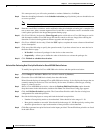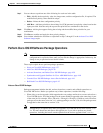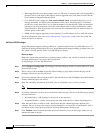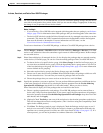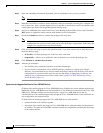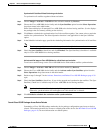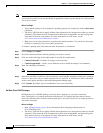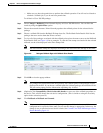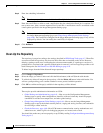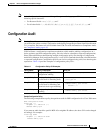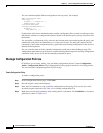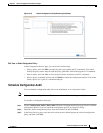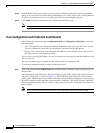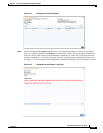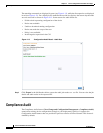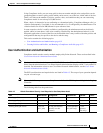
4-44
Cisco Prime Network 4.0 User Guide
OL-29343-01
Chapter 4 Device Configurations and Software Images
Software Images
Step 8 Enter the scheduling information.
Note The time you specify here to schedule the rollback job is the server time.
Step 9 Enter the e-mail ID(s) to which to send a notification after the scheduled rollback job is complete. For
two or more users, enter a comma-separated list of e-mail IDs. A notification e-mail is sent based on the
e-mail option specified in the Image Management Settings page.
Note Before you enter the e-mail ID(s), ensure that you have set up the SMTP host and SMTP port in
the Image Management Settings page (see Change Image Management Global Settings,
page 4-66). The e-mail ID(s) configured in the Image Management Settings page, if any, will be
displayed by default. You can modify the e-mail ID(s) if required.
Step 10 Click Rollback.
Clean Up the Repository
The repository is purged according to the settings described in NEIM Setup Tasks, page 4-7. When files
are removed from the repository, this does not affect files that are installed on the device. However,
deleting a package could cause a rollback point to become unexecutable. If a package or version of a
package that is associated with a specific rollback point is removed, it will no longer be possible to roll
back to that point. See Roll Back Cisco IOS XR Packages, page 4-42.
To delete images from the Prime Network image repository:
Step 1 Choose Images > Repository.
Step 2 Select the image you want to delete and click the Delete button (with red X) in the table header.
Step 3 To collectively delete all images in the repository, click the Delete All button in the table header. You
will see a prompt asking you to confirm whether or not to proceed with the operation.
Step 4 Click OK to confirm and image(s) available in the repository will be deleted.
These topics provide administrative information on CCM:
• Global Settings and Administration, page 4-61—How to use the Configuration Management
Settings page to specify when configurations should be collected, when they should be purged,
commands to exclude from comparisons, and other global settings.
• Change Image Management Global Settings, page 4-66—How to use the Image Management
Settings page to specify the default transfer protocol, staging and storing locations, and credentials
for accessing a vendor web site.
• Check the Processes, page 4-68—How CCM ensures communication security, authenticates and
authorizes users, where log files for debugging purposes are located, and so forth.
You should also make sure you have properly set up CCM by reading Configuration Management Setup
Tasks, page 4-5.



